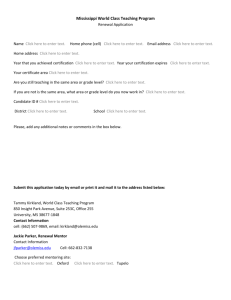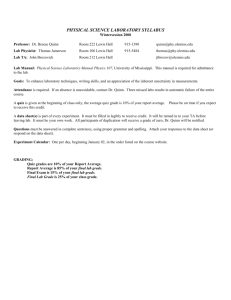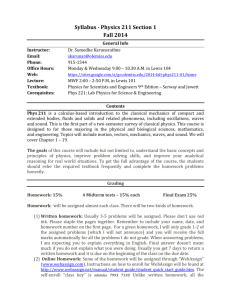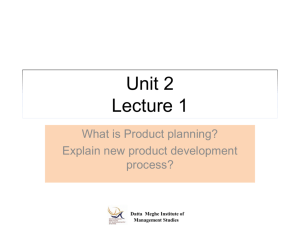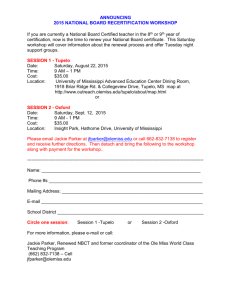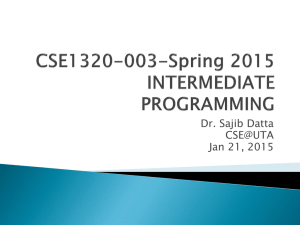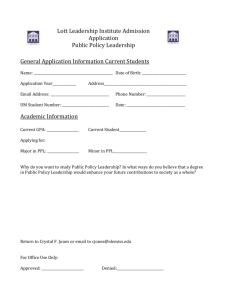Course Outline
advertisement
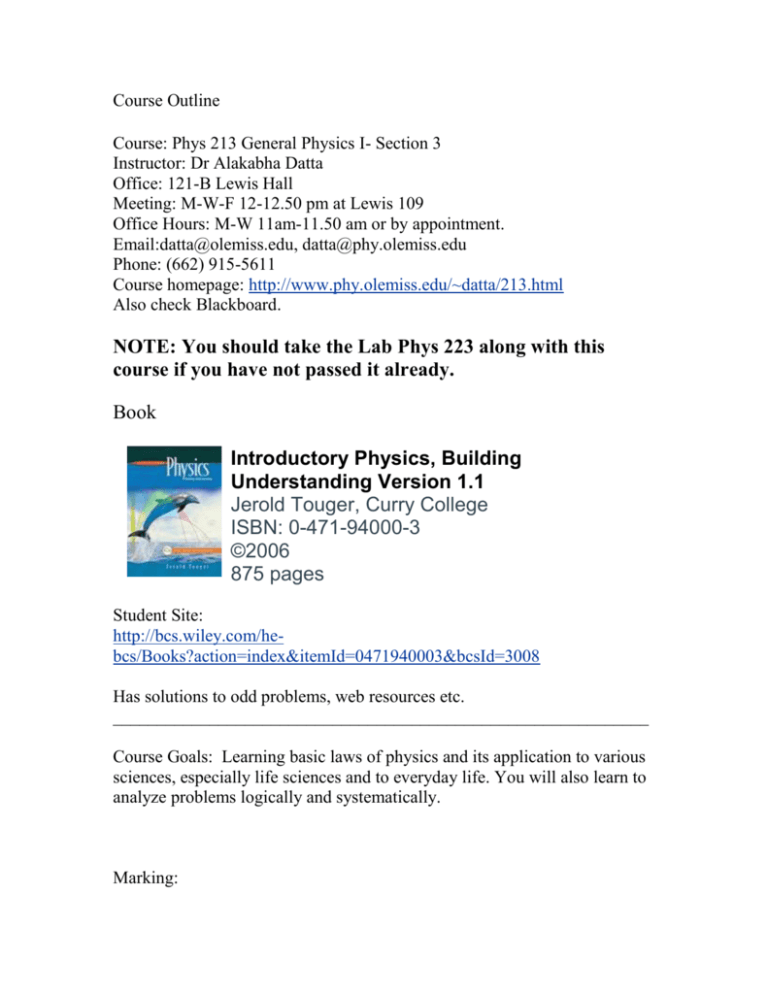
Course Outline Course: Phys 213 General Physics I- Section 3 Instructor: Dr Alakabha Datta Office: 121-B Lewis Hall Meeting: M-W-F 12-12.50 pm at Lewis 109 Office Hours: M-W 11am-11.50 am or by appointment. Email:datta@olemiss.edu, datta@phy.olemiss.edu Phone: (662) 915-5611 Course homepage: http://www.phy.olemiss.edu/~datta/213.html Also check Blackboard. NOTE: You should take the Lab Phys 223 along with this course if you have not passed it already. Book Introductory Physics, Building Understanding Version 1.1 Jerold Touger, Curry College ISBN: 0-471-94000-3 ©2006 875 pages Student Site: http://bcs.wiley.com/hebcs/Books?action=index&itemId=0471940003&bcsId=3008 Has solutions to odd problems, web resources etc. _____________________________________________________________ Course Goals: Learning basic laws of physics and its application to various sciences, especially life sciences and to everyday life. You will also learn to analyze problems logically and systematically. Marking: Homework: 30 % Homework: I will assign weekly homework that has to be turned in one week. There is a 25% penalty for late HW submission. No homework will be accepted three days after the due date. Please write your name in block letters and include the problem set number with your homework . Midterm Exam: 25% Midterm will be given over two classes. Dates will be announced later. Final Exam: 45% Wed Dec 4, 2006 at noon (See Class Schedule) An overall course average of the following percentages will guarantee the corresponding letter grade: 90% A 80% B 70% C 60% D _____________________________________________________________ Topics Covered in course: Topics will be taken from the following chapter. Click on the chapter link to access useful information. Table of contents Section I: MECHANICS Chapter 1: Physics, Mathematics, and the Real World Chapter 2: Describing Motion in One Dimension Chapter 3: Constructing Two-Dimensional Motion from OneDimensional Motions Chapter 4: Interactions and Newton's Laws of Motion Chapter 5: Behavior of Objects Subjected to Multiple Forces Chapter 6: Keeping Book on Physical Systems: The Concept of Energy Chapter 7: More Bookkeeping: The Concept of Momentum Chapter 8: Circular Motion and Central Forces Section II: Physics of EXTENDED RIGID OBJECTS AND FLUIDS Chapter 9: Rotational Kinematics and Dynamics and the Power of Analogy Chapter 10: Fluids Chapter 11: Thermal properties of Matter Chapter 12: Entropy, Thermodynamics, and the Kinetic Theory of Gases Section III: VIBRATIONS AND WAVE PHENOMENA Chapter 13: Periodic Motion and Simple Harmonic Oscillators

